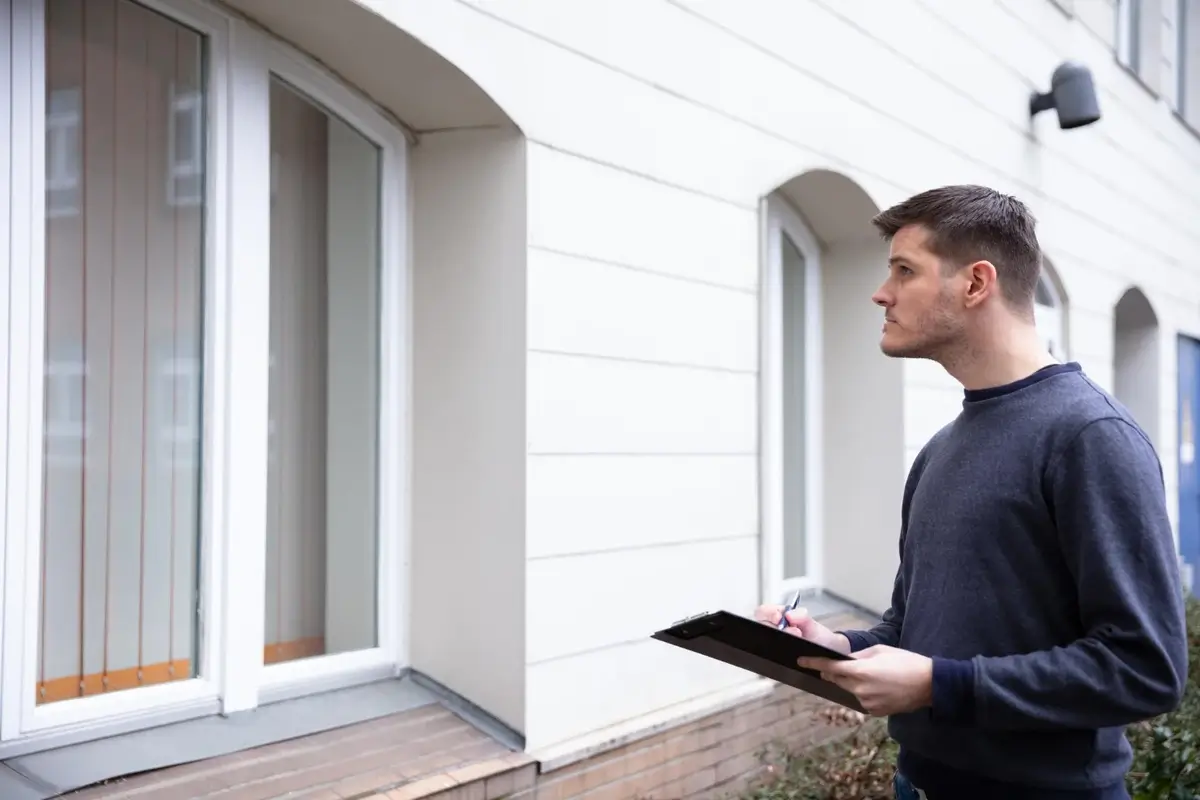Best home inspections for condos, townhouses, and standalone houses
Best home inspections for condos, townhouses, and standalone houses
Blog Article
What Is Included in an Extensive Residential Property Assessment Refine?
A thorough residential or commercial property examination procedure is necessary for making certain and securing investments safety. It incorporates a thorough evaluation of structural integrity, electric systems, pipes, and HVAC units, among other essential parts. Examiners perform a complete examination of both outside and indoor aspects, determining prospective risks and compliance with industry standards. The resulting record offers as a crucial resource for prospective buyers and current proprietors alike. Nevertheless, the specifics of what inspectors focus on, and the ramifications of their findings, can significantly affect decision-making. What, then, are one of the most crucial elements that can make or damage a residential property analysis?
Introduction of Building Inspection

The evaluation incorporates a number of key areas, consisting of the exterior and indoor elements, systems such as pipes and electric, and any noticeable structural elements (Phoenix property inspections). Throughout the procedure, the assessor documents the problem of these components, searching for indicators of wear, damage, or potential risks
An extensive building inspection not only assists possible buyers make informed choices yet also aids existing proprietors in recognizing necessary repairs or upkeep jobs. By giving a detailed report of searchings for, the assessment makes it possible for stakeholders to focus on concerns that might require immediate interest or might impact future investment.
Furthermore, an effective examination process adheres to developed market standards and guidelines, making certain a dependable and consistent assessment. In general, the home assessment process is a vital tool in genuine estate deals, promoting transparency and safeguarding both purchaser and vendor rate of interests.
Structural Evaluation

Throughout the examination, specialists evaluate numerous elements, consisting of the foundation, framing, wall surfaces, and roofing systems. They seek indications of clearing up or moving, such as cracks in walls or irregular floorings, which can indicate underlying concerns. The analysis likewise entails examining the high quality of building materials and strategies made use of, making sure conformity with building codes and criteria.
Furthermore, inspectors might look for indicators of dampness invasion, which can bring about wood rot and mold and mildew, additional jeopardizing architectural integrity. They also evaluate load-bearing components to guarantee they can adequately support the weight of the building and its components.
Ultimately, a thorough architectural examination provides vital insights for possible buyers and homeowners, allowing them to make informed decisions regarding home investments and required upkeep. By identifying structural concerns early, owners can attend to issues proactively, protecting the long-term worth and safety of the building.
Electrical System Analysis
An effective electrical system analysis is crucial in the home assessment procedure, as it reviews the safety, performance, and compliance of a structure's electrical facilities - Home inspections. This evaluation typically encompasses a comprehensive evaluation of the major electric panel, circuit breakers, and electrical wiring systems. Examiners look for indicators of wear, corrosion, or damages that might jeopardize safety and security
The assessment consists of screening for sufficient grounding and bonding, ensuring that the electrical system is properly attached to stop electrical shock or fire dangers. Inspectors likewise evaluate the ability of the electric system to manage the current lots, recognizing any type of possible straining issues that could lead to failures or outages.
Additionally, the evaluation checks for the existence of GFCI (Ground Mistake Circuit Interrupter) and AFCI (Arc Fault Circuit Interrupter) gadgets in proper places, which are crucial for shielding against electric shocks and avoiding fires. Compliance with neighborhood building regulations and regulations is likewise validated to guarantee that any type of installments or adjustments meet safety criteria.

Pipes and HVAC Checks
Following the electric system assessment, the pipes and heating and cooling checks are indispensable components of the property assessment process. These analyses make certain that the crucial systems of the building are operating correctly and safely, thereby protecting the financial investment and wellness of the passengers.
During pipes inspections, professionals examine the problem of pipes, fixtures, and water drainage systems. They look for leaks, corrosion, and any indications of water damages that can show larger concerns. The effectiveness of water heaters is also reviewed to guarantee they meet current standards and offer adequate hot water supply.
The cooling and heating checks entail an extensive evaluation of ventilation, heating, and air conditioning systems. Inspectors will evaluate the functional efficiency of these systems, making sure that they keep a comfortable indoor atmosphere. This includes examining the furnace, air thermostat, ductwork, and conditioner functionality. In addition, the examiner will certainly seek any indications of wear or possible security threats, such as carbon monoxide gas leakages in heating unit.
Outside and Interior Examinations
Outside and interior inspections are important aspects of the home evaluation procedure, supplying an extensive introduction of a residential property's condition. The exterior examination includes examining architectural components such as the roofing system, house siding, structure, and windows. Assessors seek indicators of wear, damage, or prospective dangers, including water invasion, mold and mildew development, and parasite invasions. They also analyze the check this surrounding landscape, making sure appropriate drainage and identifying any kind of trees or plant life that might intimidate the residential property.
The interior inspection focuses on the condition of living spaces, consisting of wall surfaces, floor covering, and ceilings. Examiners analyze the functionality of devices, doors, and home windows, while likewise examining for indicators of wetness or architectural problems. Electrical systems, pipes components, and a/c devices are looked at to guarantee they are in working order, certified with building ordinance, and without safety and security threats.
Both assessments finish in a comprehensive report that highlights important searchings for and suggestions for repair work or more examinations. This double strategy makes sure that prospective buyers or owners are totally notified regarding the home's strengths and weaknesses, enabling them to make educated my link decisions.
Verdict
Finally, a thorough building examination procedure includes a considerable assessment of structural stability, electrical systems, pipes, and HVAC units, together with detailed outside and indoor inspections - Best home inspections. By systematically assessing each critical component, prospective safety threats and compliance with market criteria and neighborhood structure codes can be identified. The resultant thorough record functions as an essential source, encouraging home owners and purchasers to make enlightened decisions regarding home investments and maintenance, ultimately enhancing security and value
A thorough residential property evaluation process is vital for guaranteeing and guarding financial investments safety.During the assessment, professionals examine different components, consisting of the structure, framing, wall surfaces, and roof covering systems.A reliable electric system evaluation is critical in the residential or commercial property inspection procedure, as it examines the security, capability, and compliance of a building's electrical infrastructure.Outside and interior assessments are critical elements of the building inspection procedure, giving an extensive review of a home's condition.In verdict, an extensive building go to website evaluation procedure incorporates a comprehensive assessment of structural honesty, electrical systems, pipes, and Cooling and heating systems, alongside detailed outside and indoor examinations.
Report this page